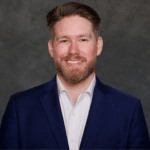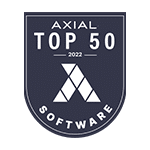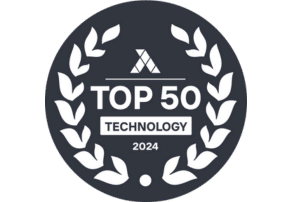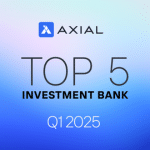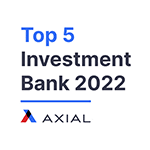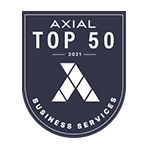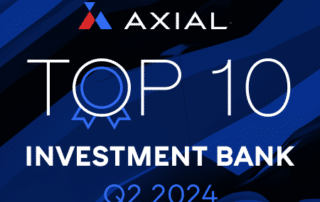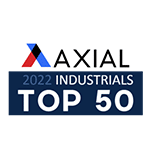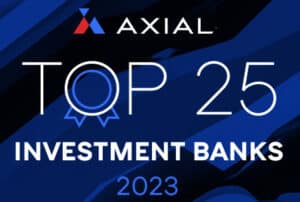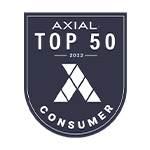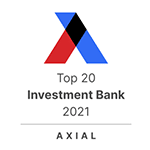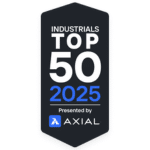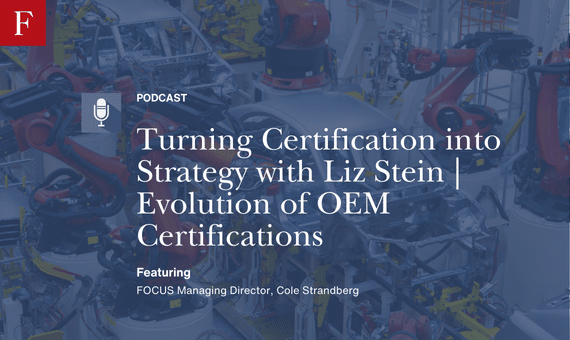
Turning Certification into Strategy with Liz Stein | Evolution of OEM Certifications
On this week’s episode, Cole Strandberg chats with Liz Stein, Vice President of Strategic Initiatives at Certified Collision Group, one of the largest networks of independent, OEM-certified repairers in the country. CCG is known for helping its members obtain, maintain, and—critically—maximize the value of their certifications. During our conversation, we’ll dig into how CCG supports shops in building a certification game plan, what independent operators can learn from that approach, and how certification can be much more than a credential—it can be a driver of long-term business growth.
Listen and Follow The Collision Vision.
Cole Strandberg: Looking forward to an awesome conversation. We’ve been chatting now for about 10 minutes and just kind of setting this up and I, I made the comment to you and I’ll make it to everyone listening here. Man, I wish I had hit record as soon as you jumped on. This has been awesome. So we’re gonna try to replicate some of that magic here. Now, Liz, we’ve had Michelle Sullivan, who we’ve commented is amazing, the CEO of CCG on the show before. But can you give us a bit of a reminder and a quick overview of what Certified Collision Group is all about?
Liz Stein: I’d be happy to Cole. We are a network of over 1100 body shops in North America and we are all independently owned and operated facilities which every. What makes our group unique is that every one of our shops has at least some form of OE certification, meaning that they met that manufacturer’s tools, equipment, training and modified facility requirements. That’s unique in our in our environment.
Cole Strandberg: Absolutely. Now, just given your background and given kind of that check, check box that you have to have to go ahead and join the network, why has CCG placed such a strong emphasis on OEM certifications?
Liz Stein: Because we want that as a differentiator between our shops versus other shops that are in the market that may or may not have the right tools, equipment, training or modified facility to be able to fix the consumers cars in those marketplaces. And our shops, you know, we tend, we’re very proud of the fact that our shops tend to be the top performers in that marketplace. And what we give them is we give them a network and a platform for them to be able to compete against the large operators.
Cole Strandberg: Most definitely for shops who do pursue those OEM certifications and we’re gonna take a deeper dive into this topic, certainly, but at a high level, where do you see those biggest benefits lying out there?
Liz Stein: Well, for OE certification, the one of the things when we created OE certification was we wanted to have a differentiator between shops that actually could meet the minimum standard to be able to properly repair the consumers cars and shops that don’t meet that requirement. As car vehicles get more and more sophisticated, it’s challenging, especially for the consumer. How do I think about where I should go? But an accident, when an accident happens, it’s a disruption to a person’s life, right? It’s not like that high end restaurant that they’ve been researching and this is where they want to go. It’s like you get into an accident, you generally were probably going somewhere and then now you need to deal with this other thing, right? Plus, you got to balance your life and being able to think about where to go. That’s why OE certification was created, is to actually help identify shops that actually met the manufacturer’s standards versus a shop that perhaps does not.
Cole Strandberg: A pretty substantial kind of quality control method, at least on the surface. We talk about the value of OE certifications and this whole series has been an absolute blast because I think there’s so much value in talking about that. We’ve spent a lot of time talking about how to get OE certified and how to select which O ES to work with. And we will talk more about that today, don’t get me wrong, but many shops do go through the process of getting certified and and then what?
Liz Stein: Right. And I think one of the biggest challenges is that OE certification is still catching up with that. The shop needs to leverage that. It’s a tool in the arsenal that they could leverage to be able to market to their community, to the greater community as a whole. But being able to market that’s not that’s not intuitive for a lot of shops to be able to do so. There’s a lot of shops that I see when they’re certified and they don’t even have it. Like they don’t even have the sign on their their lobby. They don’t have the logo that identifies that they’re OE certified even on on their website, on their marketing material. Even a lot of shops do a lot of community sponsorship. And if you think about how many eyeballs see those ads and does that identify what is that business? Do they have a tagline? It comes down to being better at being able to market, market themselves and being able to leverage those tools and their arsenal versus waiting. It’s very different than direct repair because direct repair, I’m going to send you business. Now, some O ES, like some of the higher line O ES that perhaps do not have a dealer relationship are sending work directly. Or there’s some manufacturers like GM rolled out their collision assistance app right to where the consumer then can find the shop. But the shop still needs to identify themselves as being certified by that brand. And historically, shops just haven’t done consumer marketing. That’s not something that they’ve historically have done, but the shops that do do good consumer marketing. I was talking to a shop last week and he taught himself how to do Google reviews, which I love, and he leveraged his Zoe’s certifications and he was telling me he’s getting a lead per day, but that’s because he taught himself, you know, how to fish.
Cole Strandberg: The whole concept of going through that process, in many cases it’s a whole lot of time and effort. In most cases, it’s a pretty substantial investment in tooling and equipment. It draws parallels to me of, of when, when we’re talking about not marketing that appropriately, of spending a bunch of money on a beautiful painting and then keeping it in your closet or going and, and spending money on a tattoo. But it’s an invisible ink and you have it. You have it, but what’s the point?
Liz Stein: Well, and also being good at monitoring because there’s also a lot of entities out there where you can spend a dollar and do marketing and you’re like, well, I don’t really feel the results like making sure that your front office is capturing how did the consumer actually hear from you and having multiple points of how you’re capturing that that you heard from them. So for instance, the consumer may be influenced by maybe a friend told them to go to your shop, maybe they saw a billboard. People are embarrassed to say that they were steered by a billboard. A lot of times people are steered ironically by they recognize the name and they’re like, Oh yeah, that was one of the seven options that was provided to me. Maybe the website. So being able to have multiple points of contact. So when the consumer comes in to say, hey, how did you hear from us? Your front office being trained to be able to capture all of that. So at the end of the year you can say what was effective, what wasn’t effective.
Cole Strandberg: No question. And we’ve, we’ve started to hit on this a little bit, but let’s let’s just break it down tactically and strategically. How can shops go about best leveraging their OEM certifications? Any best practices you could share beyond what we’ve already touched on, which is a lot?
Liz Stein: So I would say one of the best things to start with is understand. So it’s called units of operation. So understand which manufacturers you have in your marketplace, like how many policies. So for instance, I’m going to pick on Rivian. So if there’s only two Rivians in your marketplace, that may not be one that you want to emphasize, but if it’s growing, then maybe that is right. So understanding first, what demographic are you dealing with? You know, what units of operation are you dealing with? Then also looking at, OK, what’s your consumer? You know, what’s your average person, you know, what’s their, you know, how much do they, how much do they make per year? So for instance, if you’re not in a really affluent area, should you be going after the Audi and the BMWs, right? If you have somebody that’s one of the, you know, or are you going to be offering maybe alternative repairs to where you’re, you know, because maybe they’re going to be, you know, hey, me paying this is going to be just the minimum like how looking at that mix of business so that you can precisely go after what you want to go after without compromising your integrity.
Cole Strandberg: No question a huge, huge component and a lot of resources out there I think to help you decide on things like that. Like part of it’s going to be feel, part of it’s, hey, what’s going to happen? Some speculation, other parts of it are are very quantifiable and your paint company will have a lot of the data.
Liz Stein: Right, like your paint company is a great resource, right. Also talking to your, your data provider, if they could provide you, you know, how many policies and force were in my area, if they could provide that, right? Or being able to look up that research. But your paint, definitely talking to your paint company and your jobber to be able to help them to put together a business plan for you to work, you know, really leveraging your strategic partners as partners.
Cole Strandberg: Makes total sense. And we opened this series with an episode with Mike Anderson where he shared there are some folks around his hemisphere who are getting dejected by OE certifications, not really working out for them to the point where they are letting them lapse, which drives him crazy. It drives me crazy to hear that as well. What are some mistakes and consistent things that you see with people who just don’t find the value ’cause it’s not necessarily the program, it might be how we’re utilizing it.
Liz Stein: Well, it’s I, I would say it’s two things. So 1, knowing, knowing where that business existed, right? So do I even have that business in my marketplace or did I pursue that certification because I just wanted this cool plaque on my wall? But it really isn’t, it isn’t the demographic that’s in, that’s currently today in my marketplace. And two, really going down to what am I doing to leverage that relationship. So if it has a dealer, so let’s say that there’s a dealer component with that manufacturer, am I working, am I able to work with that dealer to help be able to build a further referral source? Am I maximizing where it could get the different referrals from?
Cole Strandberg: Absolutely. And part of the beauty of OE is to me is that you’re not necessarily waiting for business to walk in the door. There are sort of levers that you can pull in terms of partnerships to create more value for certainly in the case where where a dealer sponsorship is necessary. There you go.
Liz Stein: Right, And being able to figure out how, what am I offering cuz that dealer is also in business, right? So what am I offering that dealer? What can Ioffer that dealer if they already have a Body Shop? Am I offering like hey, could I be your overflow? And if the answer is no, then now you know that the answer is no.
Cole Strandberg: Yeah, Yep, now you know when you might be barking up the wrong tree.
Liz Stein: Right. Or maybe I need to do some creative consumer marketing and what am I allowed to do looking at like with the manufacturer, they all have a certain rules of how you can leverage the approved logos, right? And how can I leverage those approved logos in my different, you know, marketing materials? And like I said, being able to test some things out to see, hey, is this, is this generating, is this generating some leads? And what’s the possible way to be able to generate some leads? Another great way, you know, experimenting and some markets social media works. Some markets social media doesn’t work now people don’t want to hear about closure of hair. We know that, but what they may be interested in like for instance, somebody who’s a mother of two teen daughters, right, who are everyone’s heard my Horror Story about how my youngest got into an accident the day she got her license. We will never let her live that down. But but one of the things, you know, drive, you know, driving tips, what to do in case of an accident, like making those types of things instead of making it infotainment, right? So it’s informational, but it’s also entertaining.
Cole Strandberg: Yep. Well, we talked about this in our pre show call. You put good things out there, good things come back. That’s true in your marketing. Try to educate, try to give. The same is true in the case of of a sales role with, you know, hey, you’re, you’re building a Body Shop organization by way of OES and dealership relationships. For folks who don’t have a ton of experience in sales, the golden rule is give, give, give before you ask.
Liz Stein: Well, in seven points, so there used to be an old statistic and it still holds true. You know that it takes 7 brand impressions for the consumer buys, right? So in collision, we’re, we’re even more challenged because they don’t want to think about our brand until they want to think about our brand. And then when they’re thinking about our brand, it’s an immediate need, right? And it, and what that immediate need is take away the pain, make it go away, right? So for instance, when we talk about all of us can share our, our consumer experiences being on the other side of it, right? But generally, like I said in the beginning of the conversation, you were going somewhere. Now all of a sudden you got to take care of this, right? Who are you going to call? Who’s going to be your influence, right? Who’s, who’s in your ear ’cause you just want someone to help take care of the pain. And you know, looking at as the market softening foreclosure repairs to look at, hey, are we doing things the same way that the guy down the street is? Are we doing things slightly differently, right? Like why are we only open 8 to 5? Do we offer concierge? Do we offer car clinics to teenage, you know, to teenage drivers? Because you know what, When you market to the teenage driver, you get the parents, right? And on average, you know there’s three cars per family when you have that type of driver on average. So, except in those markets that are blessed with public transportation, mine is not one of them.
Cole Strandberg: Absolutely. I, I want us to take a step back because we’re kind of doing this backward. We talked about how to leverage OE certs. Now I want to go back to, all right, you’re listening to our conversation into this series on the podcast about OE certifications. You guys are beating me down. I want to get OE certified. I want to learn more. I want to fix cars the right way and leverage this from a branding potential for those jobs. What does a realistic path toward certification look like, and what should they be thinking about as they embark on that journey?
Liz Stein: So for SO it depends. So every so working with your organization, so for instance with CCG, our shops tend to work with me and then I help them with what the minimum if they want an OE certification, we go through what that what the required tools, equipment and training are. And that way they could. And for any shop, that’s what I would recommend is go on the OE site to see where the tools and equipment and training requirements are and then go through your shop and see do you meet that criteria. If you don’t realize this, that OE is not asking you to do to have additional tools and equipment or training that is not required to be able to fix their car. So if you don’t have those tools and equipment in your shop, then you got to ask yourself like, hey, should I be taking these vehicles in or should I be sending them down the street to cool, right? So first of all, starting there, next you should be talking to the administrators of those programs of OK, well, what is the cost and be able to evaluate that. And so to evaluate like, OK, I have this list. I know what I need for the tools, equipment, training, I know what the cost is. And then to be able to say, OK, when I invest in this, what I, what do I need to get out of it? Like so how much business would I need to be able to get out of that so that you could do a business evaluation. So if you’re doing, let’s say you have an opportunity with the dealer work, right? So what would that look like? And to be able to look at it from a very dollars and cents business sense, but also to realize, you know, liability is borne by the shop. So if you don’t have the right tools and equipment, then that you really need to think about what’s at risk. But if someone you know, if you don’t have the right things in your shop to be able to properly do that repair.
Cole Strandberg: A lot we talked about again, our pre sure call was full of so much value. I we need to see if we can get that back. But we talked about the fact that this is so important. It is life and death. There are so many stakeholders here, and none more important than the driver of the vehicle.
Liz Stein: You know, and we don’t it, it’s very easy to think about. It’s very easy to get caught up and to go, God, I just, I just got to get this out, right? I just got to get this out. And but we have to make sure that we have the right processes in place to be able to do that or to be able to do that repair, right? Because like you said, and I don’t want to be an alarmist, right? Could be as something as simple as fish eyes in the paint, right? And. And the consumer’s just unhappy because I got a bad paint job, right? That that’s the, you know, but it could be as bad as my backup camera doesn’t work. And I accidentally, you know, I have 3 little neighborhoods, you know, neighbors with toddlers, right? And, you know, kids zoom out and it’s like, Oh my gosh. Like that is what’s at stake when we don’t think through everything like, you know, making sure that if I’m doing the ADOS in house, am I, am I doing it right? Or if I’m outsourcing, is that facility that I outsource to, are they trained? When’s the last time they got training? Do they have the right targets? Do they have the right flooring? Being able to have all of that in place to where you know that proper repair is you, you know that that’s predictable. And if you were to do an audit, any repair, it comes up 100%.
Cole Strandberg: Ignorance cannot be an excuse anymore. I I would say anymore. It never really could, but it really can’t now.
Liz Stein: No, we’re basically driving computers on wheels, right? And, and as consumers, that’s what we wanted, right? I wanted, I wanted my, you know, my iPhone to work with my radio. And I wanted, you know, I wanted the beep, beep, beep. But I wanted, you know, and I also didn’t want to spend so much on gas, so I wanted some alternative fuel sources or I wanted, you know, lightweight weighting of my vehicle. So, you know, we as an industry have to meet the meet the consumers demands, right? And, and certification is the first part in that journey, right? Because that means that you meet the minimum standard. Then the next step in that journey is making sure that you have processes and procedures in place to where it’s not like maybe Cole repaired it today and maybe Cole didn’t repair it, right? So that we have that properly done in the back.
Cole Strandberg: No question. Now we talk about the tooling, the equipment, the training, the investment. To me, when I think of those shops that are, are moving away from some of their OE certifications, it’s not a certification problem, It’s probably a them problem. And to me one of the biggest factors. And I’d like your input on this because I know in your network and and from past lives you’ve also seen this. What mindset shifts do shops need to maximize the value of these OE certifications, not just technically, but operationally and and probably most importantly, culturally. We need that buy in.
Liz Stein: So, so definitely being part of a learning culture and also being part of a hey, I’m, I’m a marketing entity. I’m marketing my shop like I’m, I’m going to be the one that’s dependent on helping to drive business to my shop. And that I’m going to leverage my strategic partners and whatever tools are available to make sure that I’m maximizing whoever is available in the market, that I get the business that I want that comes to my shop. And being able to learn. You know, like I gave that example of, you know, the gentleman who taught himself how to do Google review, you know, hey, I’m going to, you know, I could pay a company that doesn’t know my industry or I could pay consultants to teach me how I could teach myself. No, not every shop’s gonna have that luxury to do that. And I understand that. But is there other things that they could do to help leverage their marketing? Is there some things that they could do to help maximize whatever business is available in their marketplace and to work with whatever strategic partners they have to help them maximize their business?
Cole Strandberg: Throughout this series and really across multiple series on the collision vision, the word change is one that’s thrown around a ton and our industry is seen as much as any industry out there in terms of change and technological innovations. What I find it interesting, and I’m I’m so glad you’re focusing on it is, is beyond the mechanical changes, beyond fixing the cars, the business environment is changing too. And not only do we as an industry need to be able to adapt to the technological innovations, we need to be able to adapt to those changes in the winds of business too and be marketing forward and learn these skills. What other changes do you anticipate owners needing to be savvy in on the business side of the collision repair space?
Liz Stein: We, we, we have a evolving consumer and we need to meet the consumers needs where they’re at and we need to understand that updates and how we update the consumer and what we take on to help the consumer with their negotiations like that. We understand that it’s a different work consultants really with the shop, right? So it’s like a doctor when they’re giving you a diagnosis. And I’m going to walk you through what, you know, what we’re going to do. We’re going to give you documentation and you know, we’re going to help you navigate this process because it’s a very challenging process. This is not something that consumers are used to dealing with. And we now I was joking with a group that I was speaking to the other week. You know, we now have an audience where you can order a pizza and you could track the pizza the, all the way through and then the, and then the guys at your door right now you’re paying. So you have that, you have Amazon. Like you’re telling me a bumper takes 3 days and it does take three days. You got to walk me through that and you got to communicate with me in a way you need to make sure that you’re communicating with me in a way that meets my need, right? Don’t over communicate nothing. If I don’t want that, like ask me, how do I want to hear from you, right? Don’t make me have to call you for an update. And then to dodge, You know, I always joke there’s, you know, the front office. Sometimes they’re the last to know what’s going on with the car. And then somebody like, you know, you get somebody like my husband who’s like, where’s the car? Cool. And, you know, this is that lunch, right? So to be able to anticipate, hey, Cole’s gonna want an update pretty proactively because Cole’s paying Cole forgot to add the rental car to his insurance policy and he’s probably gonna be eager to ditch that $48 a day. So he’s going to want an update. So we should probably give him an update sooner rather than later. And how do we build that process in whether there’s some great electronic solutions to be able to take advantage of, to empower our people to have full transparency and visibility. But those things are going to matter in the future because consumers are becoming more sophisticated and what their needs are, and we need to meet them where they’re at.
Cole Strandberg: No question. Another, another reference to our friend Mike Anderson, right. Customer expectations are not related to the collision repair industry at all. They don’t, they don’t adjust expectations by industry anymore. They’re used to. I did it. I did it yesterday. I needed some hair stuff. I clicked the button and it was here this morning. So I could be here with you and have the hair in decent shape. Otherwise it would have been a mess. That’s the level of responsiveness and serviceability and ease that customers look for. And it’s it’s a very challenging thing to adapt to, but the insights there are valuable and greatly appreciated. I want to talk a bit about the network of CCG and you’ve been involved in multiple networks and you work with a ton of and have with a ton of independent operators Going back to the spirit of give, give, give and then ask, I’d love to know if if there are any kind of key lessons or takeaways that independence can apply from what you guys do at CCG into their own business.
Liz Stein: So for us with our shops being able to maximize like our our, our network, we’re really fortunate that our network gets to work very closely with their strategic partners to help leverage to help leverage the business to be able to compete on a larger and more sophisticated playing field. And we’re really fortunate to be able to have this hands on relationship. This is my a lot of these shops I have done business with for several years and they’re some of my favorite shops in the industry and I love getting to work the opportunity that we get to be able to serve them and be able to work with them. But shops really leveraging all of their strategic partners and their relationships and realizing at the end of the day, business is a relationship game. So in how you treat, you know, how you treat others is is really going to pay dividends. So making sure that understanding, you know, are we maximizing our opportunity together or am I just getting the, you know, the bare minimum because I haven’t asked for more. So being able to learn from some of those strategic partners and being able to take those lessons and figuring out a strategy on how you’re going to implement that in your business. Because that’s the other thing is you can get presented with a million ideas and you want to execute everything and then you execute nothing. We’ve all done that, right? So being able to say, OK, I’m going to do this one thing and I’m going to get and give yourself a deadline like I’m going to get this done by this time, right? And making sure that you get those things done within that time frame to where you’re delighted because you meet your you know, you meet your year end goal and set some set some goals for yourself and also work with your team. The other thing I want to talk about Cole, that we don’t talk a lot about. So we forget about our people. Our people are our best advertisers for us, right? So we’re always certified and we throw it up. But you know, you met for a lot of those certifications, you were one in five that actually got certified by that manufacturer brand. Telling our people what that means, having them feel it, having them embed that into their own word track when they’re talking to people about where do you work and why do you work there?
Cole Strandberg: Technicians in this industry rightfully take great pride in, in what they do. And it’s especially true if you’re a certified shop fixing cool cars the right way. We, we talk about the pride that we see in, in, in collision repair organizations in Europe, like it’s a very prestigious thing. It is here too, and it’s trending that way. And it’s especially true when, to your point, you have your team take pride in the fact that, hey, we are, we are certified. We’re doing this the right way. I’m not, I’m not on a manufacturing floor, nothing against manufacturing, but I’m an artist. We’re, we’re doing this. We’re an engineer meets artist.
Liz Stein: Well, and to, to that point, Cole, some of our shops, like when I go to visit them, like I, it’s, it’s so neat because I’ve been approached by, you know, estimators as well as technicians at the shop that are want to show me. But you know, like, Oh my gosh, I want to show you this. You know, I spent Friday, you know, late Friday afternoon with one of our, you know, shop managers who was excitedly telling me, you know, an improvement that they made at their shop. People want to be better. I, I fundamentally believe that there’s some people that want to take shortcuts and those people I have no business doing, you know, for us to do business with. But the ones that want to do it right, you know, we have an obligation to help show them and to help coach them and mentor them and help praise them because it’s a tough business right now and a lot of people get beat down and we need to shine the light on those that are doing it right and we need to support them as an industry.
Cole Strandberg: Well put and and going back to to the value of the network that I I would also group in peer groups and mentors. There’s an accountability partnership level, but there’s also if I’ve learned anything from 2 plus years of the collision vision is is that this industry is is so willing to share and help and improve together. The the mentality of a rising tide lifts all boats is so true here and it’s an amazing resource just to talk to people, whether it’s industry partners, whether it’s competitors. I say in air quotes, for those not watching us on video, there’s so much to like and there’s so much positivity that’s going to take us through any short term challenging macro times.
Liz Stein: I, I would IA 100% agree with you. You know, square 1 is one of our our business entities and they have coyote vision and that I believe has been around about 40 years and what they have all built there. And some of those relationships like that it isn’t it is inspiring. Performance groups are, are the best defense for shops because they’re they’re aligned. And what cracks me up is in that room, some of them would, could be competitors, but they view each other as, hey, we’re, we’re help raising each other, we’re help making our businesses better. And I’m, I, I’m so impressed by, by that, by that group of people. And also, you know, performance groups in general, you’re getting with your peers and you’re holding each other accountable because it’s very easy to keep your head down. And there’s a lot of I mean to, I should, I could, I would. And then, you know, market gets soft. Now you’re mad, but it’s like, OK, what am I going to do different, right. And that group, you can’t go in, like I know Coyote is one of them. I know there’s other twenty groups. It depends on, you know, they’re all different. So what flavor, what flavor works for you if a shop’s not part of one, but absolutely they should be a part of one because that there’s nothing better to coat shops than other shops, and especially someone that’s walking in your shoes.
Cole Strandberg: Game changer, no question. I want to relist back before we part ways to the OEM portion of the conversation because you and I could get off on on so many tangents and chase so many rabbit holes. It’s been a pleasure speaking with you, asking you to pull out your crystal ball for a little bit. Where do you see the industry as it relates to OEM certifications here over the next five years?
Liz Stein: I, I think we’re going to see some significant changes in some of the, in some of the programs and how they’re facilitated. I think we’re also going to see some changes in how those programs are communicating with the consumer or not communicating with the consumer. So I think some will get stronger and some may evolve into something else. Because one of the things that I think O ES right now, there’s several O ES that are really working hard on trying to wrap their hands around, how do we, how, what’s the best method to communicate to the consumer? And when, when do we communicate to the consumer, right? Should we, you know, point of sale is tough because it’s already 45 minutes. They’re trying to get out the door, right? So then how do I remind the consumer that they have a network? How do I know that that network’s doing things properly? I think we’re going to see some, some O ES may seem like they’re going to take a step back before they take a step forward. I think it will evolve as the consumer’s evolving because the manufacturer’s going going to want to know that that car was repaired properly. But how they’re going to be able to do that, they have to determine that.
Cole Strandberg: Such an interesting dynamic, right? The macro and the micro sort of collide there.
Liz Stein: Right, they’re not going to want to get because you can’t you can’t be at the shop make you know, audit every repair. So how do you so looking at data, I think there’s going to be some analysis like kind of taking a step back and doing some analysis. But in the meantime, shops can leverage that can leverage what they have to be able to market and, and see what marketing is effective in their, in their area because like every market is different.
Cole Strandberg: No question. So keeping that future outlook in mind, one question to kind of land the plane here and let you get on with your day is if you’re an independent shop interested in pursuing OE certifications, what are you doing now to improve your business and to make sure you can compete in in staying up with and thriving in this challenging environment?
Liz Stein: I, I, I would first talk to my paint company and understand what’s the makeup in my marketplace. Then I would also look at other dynamics with any of my data providers. I would look at the last 12 months of business that I’ve prepared and to be able to see am I capturing everything I could have been capturing what was my, you know, what was my missed opportunity? I would see what dealerships are in my marketplace and what’s available for me to try to steel. Or if I do have that dealer relationship, how can I strengthen that relationship so that that way I have multiple sources of multiple sources of referral of referral work coming to me. And then also seeing, you know, if I have insurance relationships, evaluating those insurance relationships and seeing, you know, what matters and for my certifications, so if aluminum matters or having some EV certifications and then also making sure that my shop is equipped to be able to handle those different types of vehicles.
Cole Strandberg: Plane successfully landed. I would say, Liz, this has been an absolute blast. I so appreciate your insights, your energy. Like I’m fired up. I, I think we should just go ahead and do another show on a different topic right here after this. For folks who are equally fired up, who want to learn more about CCG and or get in touch with you, how can they do that?
Liz Stein: Sure. So [email protected], I will be at CIC. So I also Co chair our OEM relations committee. So we’re going to be doing a survey at CIC at the Southeast St. show. And then I also happened to chair Wynn. So the following week I’ll be at Wynn. So if you’re at either one of those conferences, please say hi or go ahead and shoot me an e-mail. Thank you.
Cole Strandberg: Busy times ahead. Liz Stein, thank you so much for joining us on The Collision Vision.

